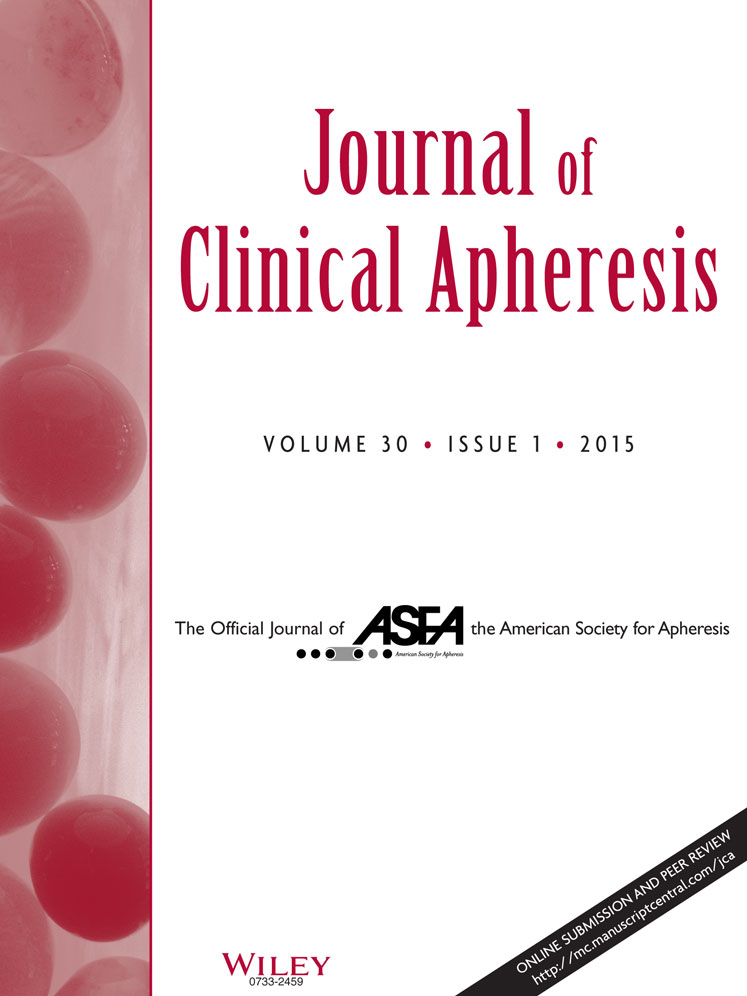Calculations in apheresis
From the Proceedings of the 35th Annual Meeting of the American Society for Apheresis and the 15th Biennial Congress of the World Apheresis Association, San Francisco, California, April 2014
Abstract
It's important to work smoothly with your apheresis equipment when you are an apheresis nurse. Attention should be paid to your donor/patient and the product you're collecting. It gives additional value to your work when you are able to calculate the efficiency of your procedures. You must be capable to obtain an optimal product without putting your donor/patient at risk. Not only the total blood volume (TBV) of the donor/patient plays an important role, but also specific blood values influence the apheresis procedure. Therefore, not all donors/patients should be addressed in the same way. Calculation of TBV, extracorporeal volume, and total plasma volume is needed. Many issues determine your procedure time. By knowing the collection efficiency (CE) of your apheresis machine, you can calculate the number of blood volumes to be processed to obtain specific results. You can calculate whether you need one procedure to obtain specific results or more. It's not always needed to process 3× the TBV. In this way, it can be avoided that the donor/patient is needless long connected to the apheresis device. By calculating the CE of each device, you can also compare the various devices for quality control reasons, but also nurses/operators. J. Clin. Apheresis 30:38–42, 2015. © 2014 Wiley Periodicals, Inc.




